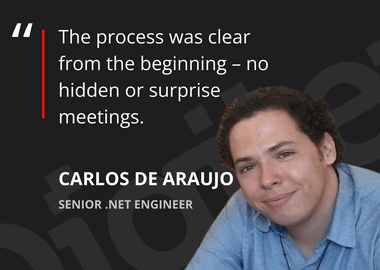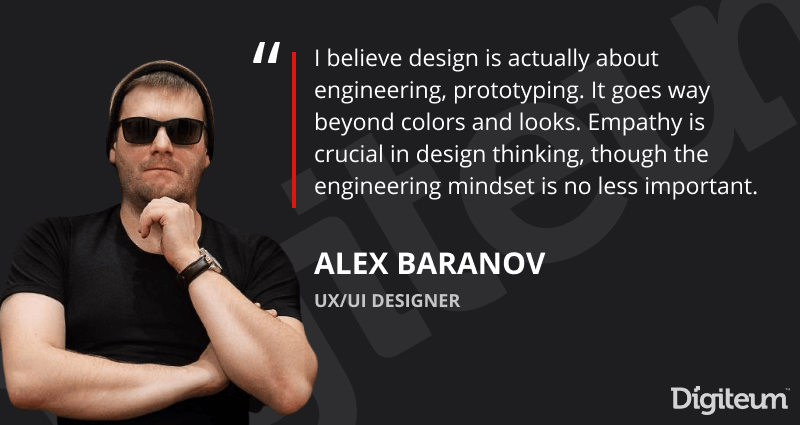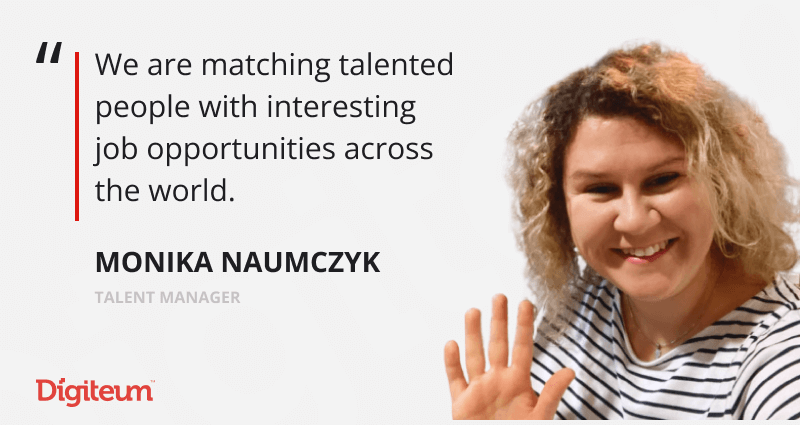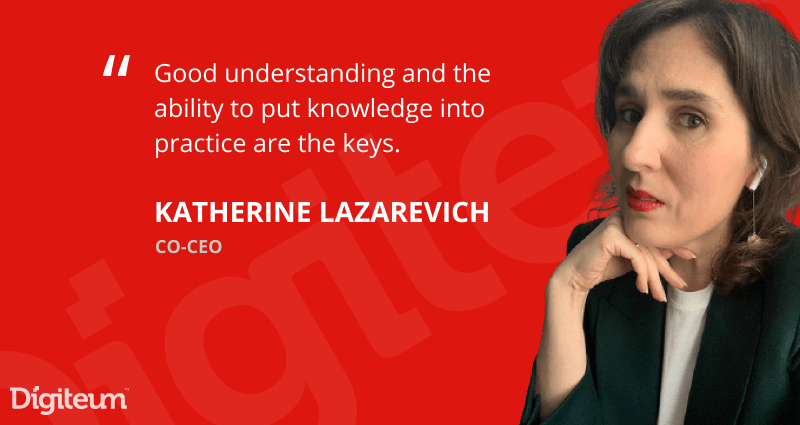How Extended Hiring Process Helps Avoid Failed Expectations
In your opinion, how long is too long when it comes to the hiring process? Today, with everything that is happening in the IT talent market even 2 weeks seems like a lot. Engineers roll in generous offers, and many simply don’t want to commit to a long process. Unless there is a prize in the end.
We asked two senior .NET engineers at Digiteum, Daniel Skóra and Carlos de Araujo, who successfully went through a multistep recruiting process for the Lodgify project to learn firsthand:
- if it was worth it (obviously),
- what steps it included,
- what benefits and drawbacks they noticed.
Before we get to the cool stuff, let’s first explain what we mean by an extended hiring process and what’s all the fuss about.
Imagine a standard recruiting process in IT, for example, to hire .NET developers. You talk to a recruiter first, then go through the interview with tech specialists and senior management, complete a tech task and get a juicy offer in the end. This process usually takes 2 steps, 3 tops. The extended process is slightly longer because it adds the interview with the client’s team, tech and senior managers. To be fair, there’s nothing unusual about that. But this extra time can, however, cause doubt on the candidate’s end.
Let’s figure out if this doubt is valid.
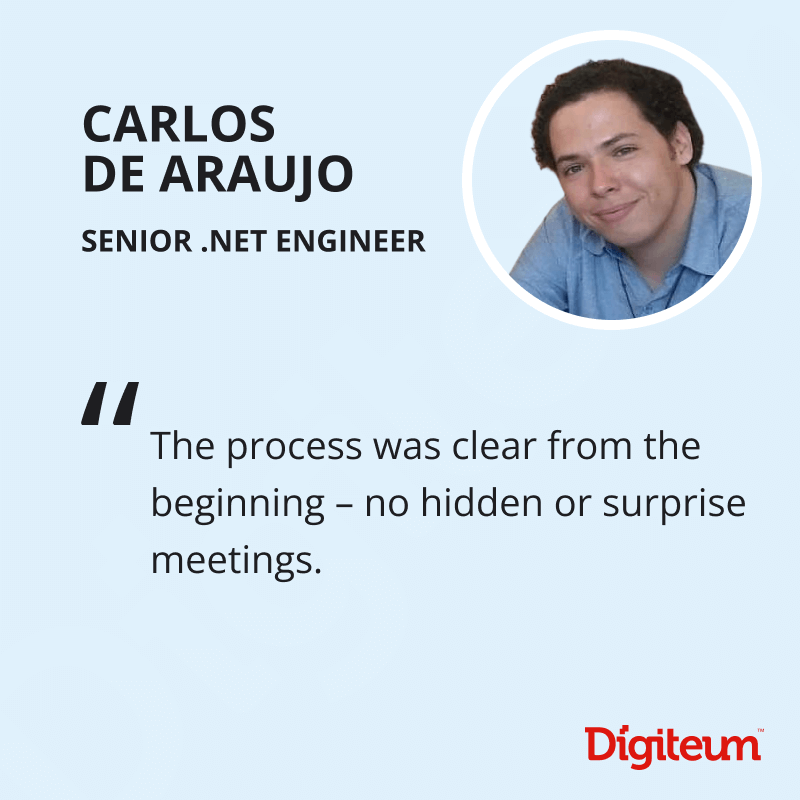
4 steps of an effective recruiting process
Your hiring process consists of 4 simple and clear steps:
- An introductory talk with the HR and talent team
- Interview with senior tech specialists at the company that hires you (in our case, Digiteum)
- Interview with the client’s tech specialists and the team
- Interview with the client’s senior managers
Every single step gets you closer to the project and the people you will be working with.
Here’s how it works in practice.
Daniel: I had an interview with an HR, then a tech interview with senior specialists at Digiteum (Co-CEO, CTO and Talent Manager). I was given a task which, in my opinion, was quite simple and quick, and even joyful I would say – I did more complex tasks before. After that, I had a conversation with a manager on the client’s side and, finally, a talk with their Chief Engineer.
Carlos: The process was clear from the beginning – no hidden or surprise meetings. From the start, I talked to a headhunter on LinkedIn, and he introduced me to Monika and Kate from Digiteum. We had an intro meeting to see if it was a good fit, and then I had a technical test on GitHub to develop a certain feature related to the project. Later, I had a call with the client’s team to discuss the solution and have a tech interview. After that, I met Chief Engineer and we talked about culture in the company, management, etc. At this point, I was almost sure I would get the job.
It was not a long process, I’d say. Maybe a few steps in the middle make you think it’s a bit more complicated, but not much. From my previous experience, it was rather an average process – neither long nor short.
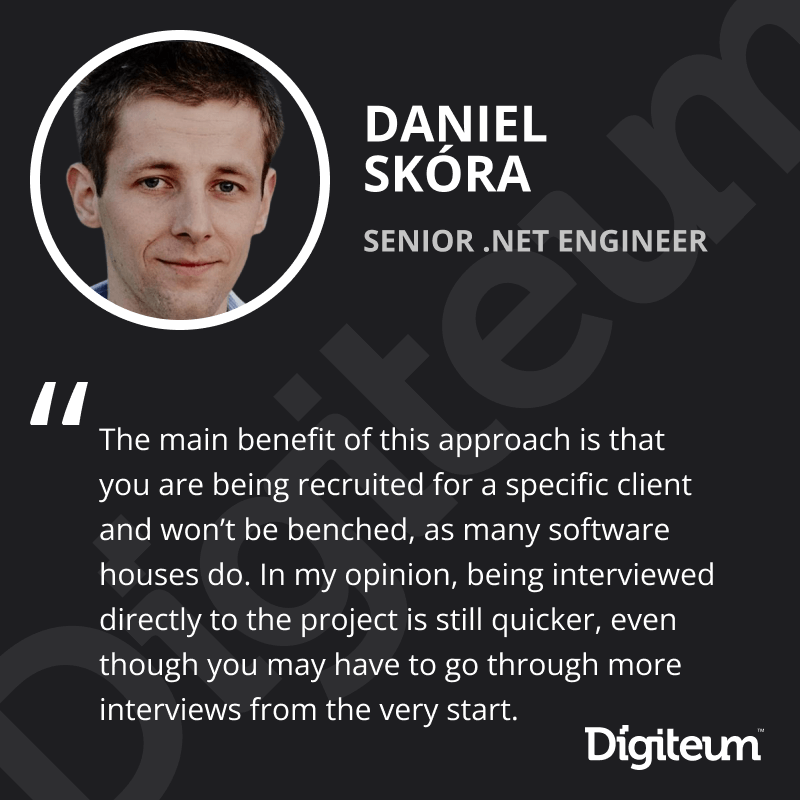
Pros and cons of an extended hiring process
Pro: you know exactly what you are getting into
Daniel: The main benefit of this approach is that you are being recruited for a specific client and won’t be benched, as many software houses do. I had experience being recruited for a company and then it turned out there was no project for me to start with, so I had to wait till I could get on an interview with the next client. In my opinion, being interviewed directly to the project is still quicker, even though you may have to go through more interviews from the very start. This is not a common practice though.
Carlos: I talked a lot to the Chief Engineer about the process and development environment on the project, and he answered all my questions. I already knew what to expect from the company I was going to work with thanks to these talks.
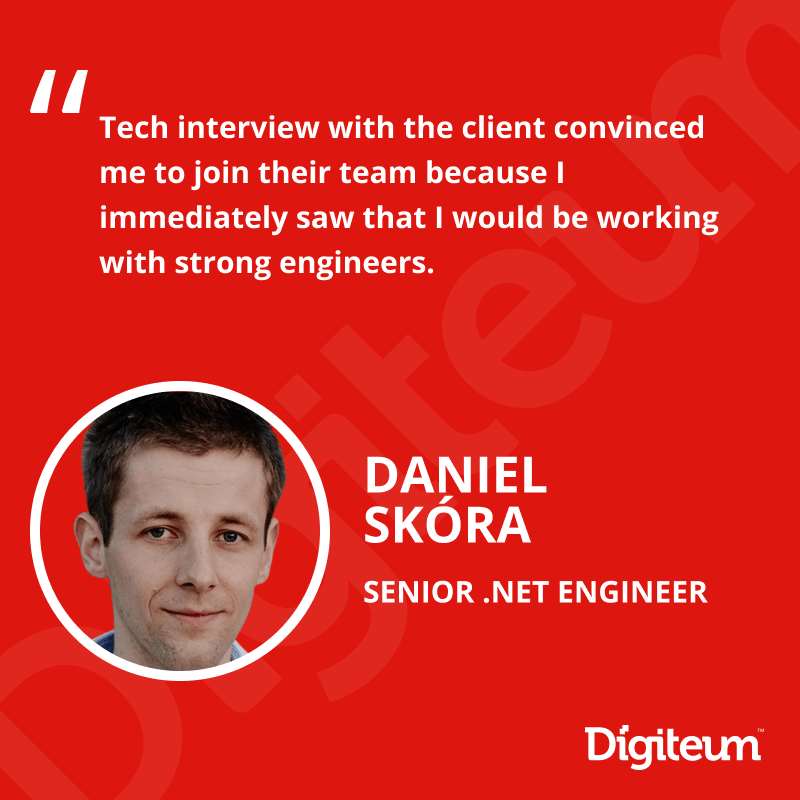
Pro: you get to know your tech and taste the project from day one
Daniel: You get to see the tech level during the interview. In my team, for instance, the seniority level is quite high, we don’t have anyone below middle positions, which is good. Tech interview with the client convinced me to join their team because I immediately saw that I would be working with strong engineers.
Carlos: From a technical perspective, it was the hardest test I have ever had. But it’s also the best job I have ever had, so in my point of view, it was worth it.
Tech test is very practical: no abstract questions and academic knowledge that you wouldn’t normally apply on a daily basis. We used real-live code and the tools that we work with on the project (GitHub, API, DDD, unit tests).
Con: longer process, more stakeholders involved
Daniel: The process was quite long in my case because one of the stakeholders was on holiday. I did, however, get the feedback real quick.
Carlos: I could use one or two more days to finish the test. Also, direct contact with the client’s tech team to ask questions about the test would be helpful.
BONUS PRO: get to know the people you will work with even before you get the offer
One of the biggest benefits of having several interviews with different stakeholders is that you get to know the people you will be working with early on, starting from the interviews and later during your first days on the project.
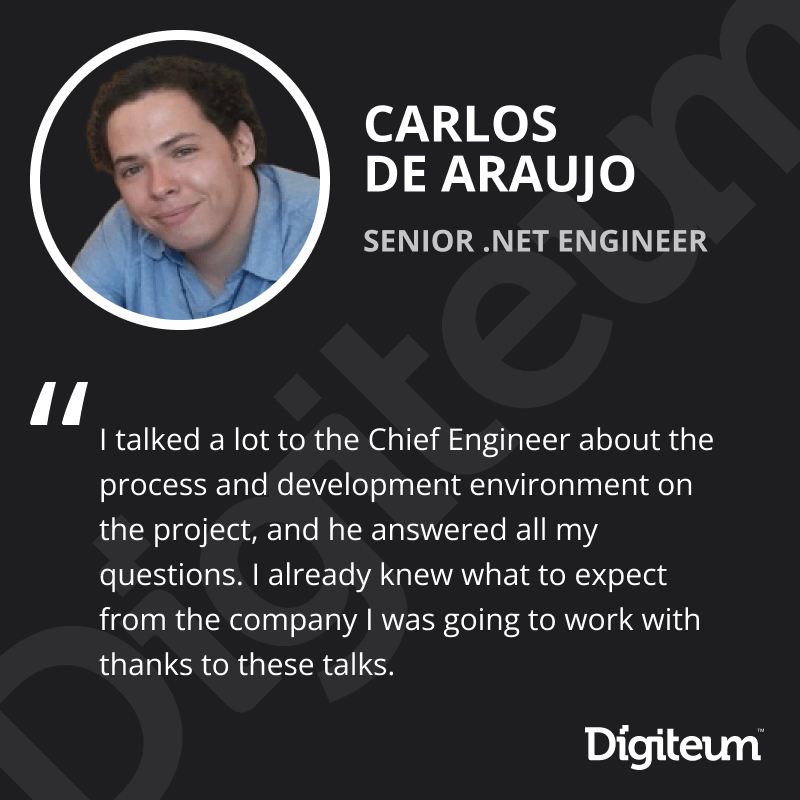
Daniel: During the first two weeks, we knocked all the departments from customer services to accounting to learn how the entire business works. It was an interesting experience for me personally. I got a bigger perspective on how the product and application work, how they make money. I could understand the client’s business needs, understand their profit. Usually, you just get introduced to the team and get down to work.
We work with a small multicultural team where everyone knows each other – we have people from Spain, Poland, Argentina, and we have Carlos who’s from Brazil though he works from Krakow now. When I need something I usually can contact one or two people only to get what I need and not wait for weeks to get permissions. Everything works faster here. Even though the company has long outgrown the startup phase they still preserve the open friendly atmosphere.
The bottom line
- Extended hiring process adds one or two extra interviews with the client from the start – the interviews that you would do anyway when assigned for a project later on.
- This approach helps avoid failed expectations since you know from the beginning about the project, technologies and people you will be working with.
- Talking to the key stakeholders at the recruiting stage helps you better understand the project and its goals and make an informed decision – do you want to be a part of this story or not?
Still not convinced?
Grab a few tips from the engineers who have been there, done that:
“Generally, I advise to give it a try.”
“First and last meetings are really to see if you’re a good fit. Just don’t stress out and you should be fine.”
“Technical test is to show how you approach problems. Don’t refactor too much and be aware that you’ll have to back up your solutions. Treat it as a live code – as if you were doing a new feature or maintenance.”
If these ideas made you even a bit curious, we have good news for you! There is an exciting position on this particular project to look into: Backend .NET Engineer. Check our career page or contact our Talent Manager at [email protected] to learn more about the process and how to start.


